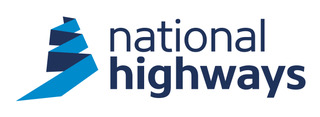National Highways Open Letter To Industry


Nobody goes to work to intentionally harm or kill someone, but the reality is that unless you make sure the loads you carry are safe you are putting yourself and other people at risk during your journey and when you come to unload.
Any item capable of being thrown from or bouncing out of a vehicle needs to be secured whatever vehicle it is being carried on, whether it’s a plastic bucket or wheelbarrow, steel beams or heavy plant equipment. Even small items can kill or seriously injure someone if they come off a vehicle at speed. Delays and disruption on the road network because of load debris cost the UK economy millions of pounds every year.
Load shift incidents on the road and in the workplace are both foreseeable and completely preventable. Police forces, the Driver & Vehicle Standards Agency (DVSA) and National Highways are working together to protect people, but we can’t do it alone. Drivers, vehicle operators, and those loading vehicles or trailers for others (consignors) must also play their part in preventing deaths and injuries.
There is no excuse for sending dangerous vehicles onto the road network and putting people at risk. Appropriate enforcement action will be taken where individuals and companies are found to have recklessly broken the law.
The Road Traffic Act 1988 and the Road Vehicles (Construction & Use) Regulations 1986 say you must make sure that anything transported on or in a vehicle or trailer is secured so that it does not move during the journey and put people at risk. The Health & Safety at Work Act 1974 says that employers and the self-employed whose work puts others at risk must take steps to protect both their own employees and anyone else who could be at risk. Everyone has responsibilities to make sure that the load is safe and it’s not enough to simply assume the driver is the only responsible party once the vehicle leaves your site or rely on not having had something go badly wrong before.
- If you operate vehicles or load vehicles for other people, you must take steps to protect the driver, other road users, pedestrians, and anyone involved in loading or unloading. You must make sure drivers and people loading vehicles have the right training, information, and equipment to do their jobs safely. It is not enough to assume that the driver will make it right and your legal responsibilities do not end when the vehicle leaves your site.
- If you drive vehicles, make sure you know what you need to do. Challenge poor practice in the workplace where you can and ask for training if you are asked to take something out and you are not sure how it should be secured. Don’t assume it will be ok just because you’ve always done it that way. Check your securing equipment every time you use it and don’t use damaged equipment.
Free load security guidance is available from DVSA and free workplace transport guidance and resources to help you assess risk are available from HSE. Other guidance from National Highways, industry associations, and trade unions is also available to help you make sure you’re operating safely.
We all want our roads to be safe as possible and we all want to go home safely at the end of the working day. Play your part by making sure that everything you carry is secured and the vehicles you load are safe and legal before they set off.
Load securing: vehicle operator guidance – GOV.UK (www.gov.uk)
HSE: Information about health and safety at work

